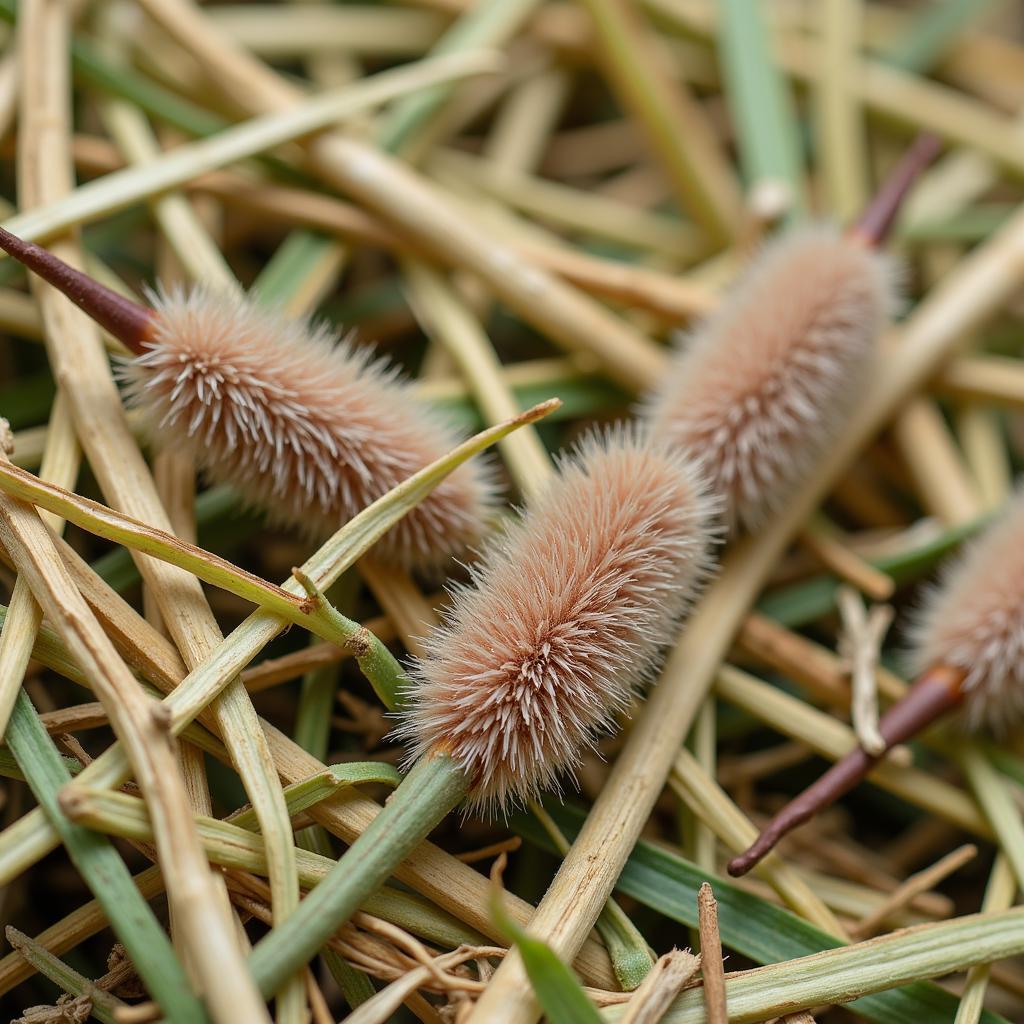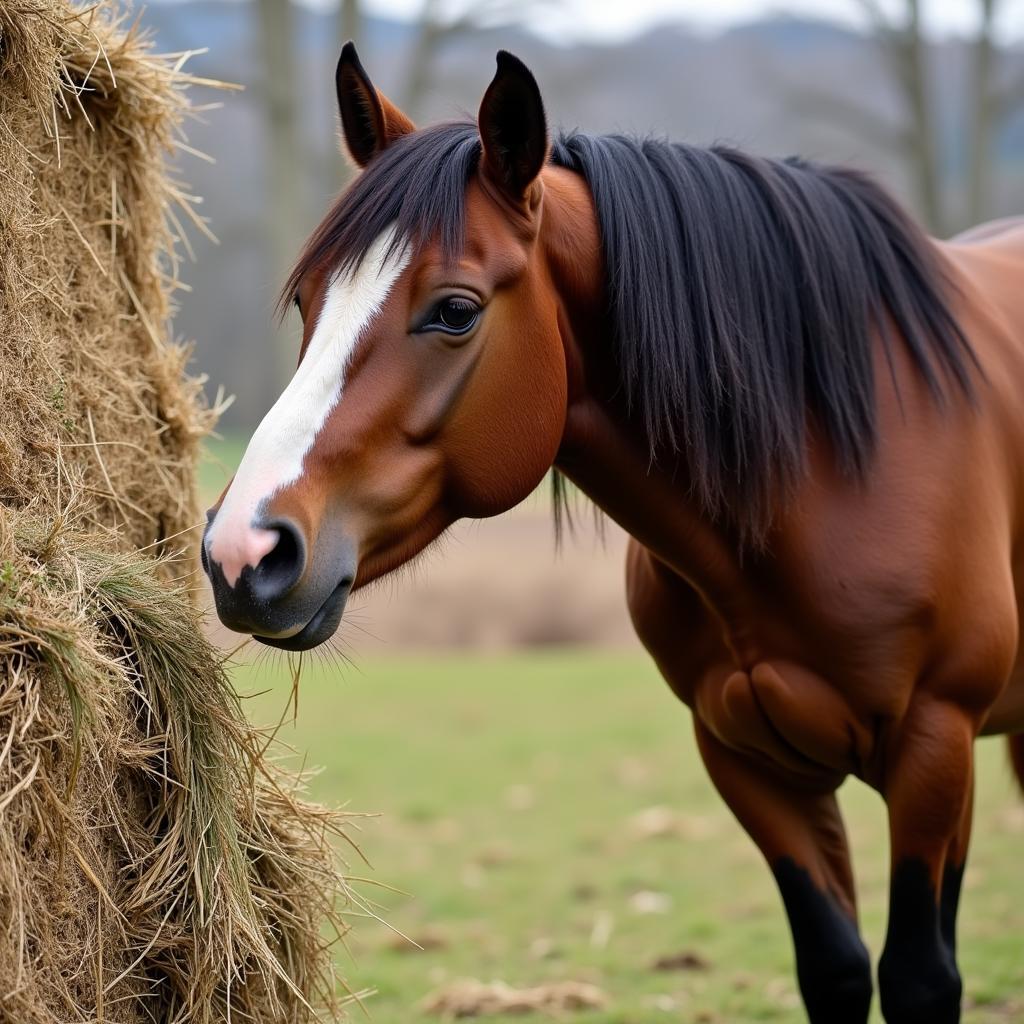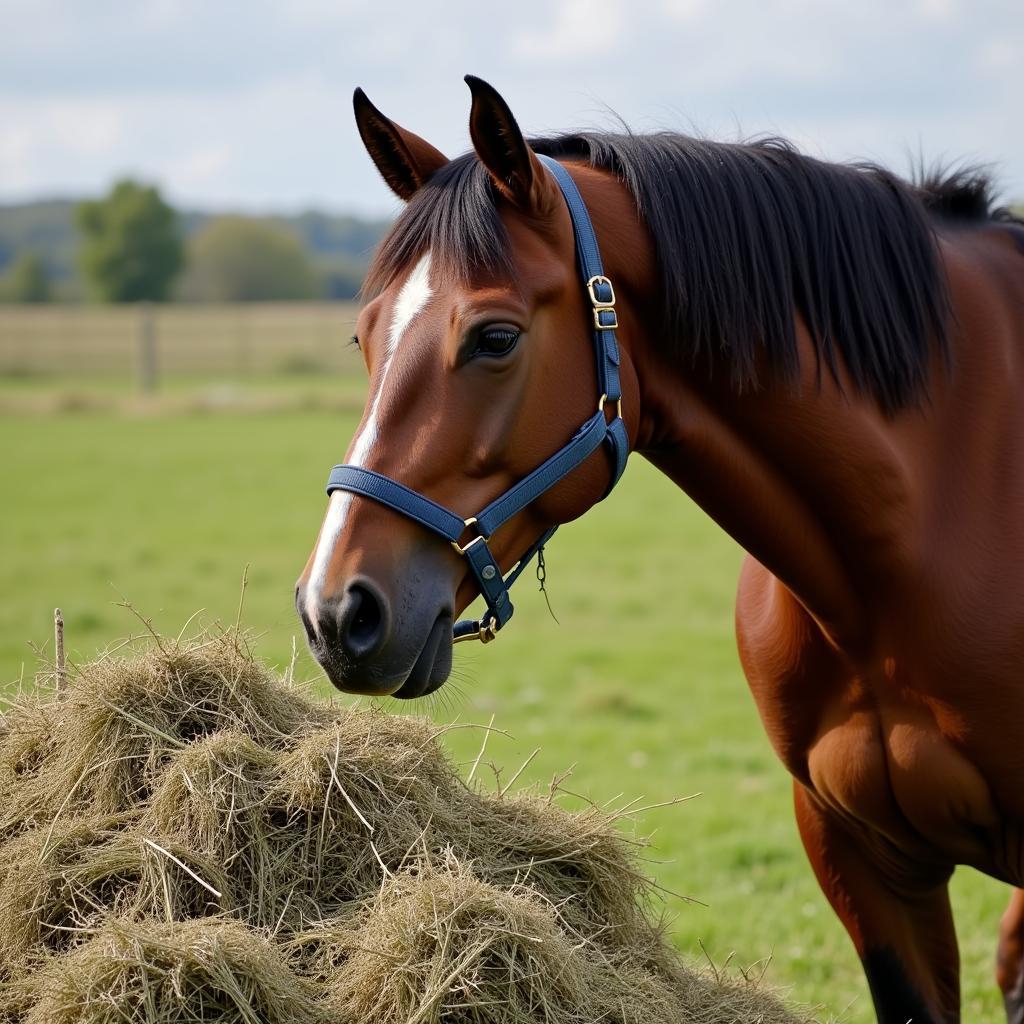Foxtail In Hay For Horses can pose a serious health risk. These pesky weeds can cause abscesses, infections, and even death if ingested. Understanding the dangers of foxtail and how to minimize their presence in your horse’s hay is crucial for responsible horse ownership. Let’s delve into the details of this often-overlooked hazard.
 Foxtail Contamination in Horse Hay
Foxtail Contamination in Horse Hay
Identifying Foxtail and Its Dangers
Foxtail (genus Setaria) is an aggressive weed common throughout the United States. Its barbed seed heads, also known as awns, can easily become embedded in a horse’s mouth, throat, or digestive tract. Unlike other plant materials that soften with saliva, foxtails remain rigid and continue to migrate further into the tissues, causing inflammation, infection, and sometimes even life-threatening complications. Foxtail grass and horses are a bad combination. If you suspect your horse has ingested foxtails, consult a veterinarian immediately.
Why is Foxtail in Hay Problematic?
The danger lies in the foxtail’s structure. The tiny barbs on the awns act like miniature fishhooks, preventing the plant matter from backing out once it has penetrated the tissue. This can lead to a range of issues, from localized abscesses to serious internal infections. Early detection and veterinary intervention are essential. You might be interested in knowing more about foxtail horses.
 Horse Examining Hay for Foxtail
Horse Examining Hay for Foxtail
Preventing Foxtail Contamination in Hay
While completely eliminating the risk of foxtail in hay is challenging, several preventative measures can significantly reduce the likelihood of contamination. Careful hay selection is the first line of defense. Opting for hay harvested from fields with minimal weed presence and scrutinizing bales before purchase is essential. Learn more about suitable hay options, such as millet hay for horses.
Best Practices for Hay Management
- Source carefully: Purchase hay from reputable suppliers who prioritize weed control.
- Inspect thoroughly: Before feeding, meticulously check each bale for signs of foxtail.
- Store properly: Store hay in a dry, well-ventilated area to prevent mold and further weed growth.
- Consider alternatives: In areas with high foxtail prevalence, explore alternative forage options.
- Use a grazing muzzle: A grazing muzzle for mini horse can also be adapted for larger horses to limit their intake of foxtail while grazing.
 Horse Eating Foxtail-Free Hay
Horse Eating Foxtail-Free Hay
“Foxtail is a silent threat,” says Dr. Emily Carter, DVM, specializing in equine medicine at Equine Wellness Center. “Horse owners often underestimate the danger until it’s too late. Regularly inspecting hay and pasture is crucial for prevention.”
What are the signs of foxtail ingestion in horses?
Signs can vary depending on where the foxtail has embedded itself. Common symptoms include swelling, discharge, difficulty breathing, coughing, and weight loss. Sometimes, the foxtail can work its way to the skin’s surface, creating a draining tract. For more information on respiratory health in horses, see cough free for horses.
“Another key preventative measure is maintaining good pasture management,” adds Dr. Carter. “Regular mowing and weed control can help minimize foxtail growth in grazing areas.”
Conclusion
Foxtail in hay for horses presents a significant, yet often overlooked, risk. By understanding the dangers and implementing preventative measures, horse owners can protect their animals from the harmful effects of this pervasive weed. Diligent hay selection, proper storage, and regular pasture maintenance are key to minimizing the risk of foxtail contamination and ensuring your horse’s well-being. Remember, vigilance is your best defense against foxtail in hay for horses. Check out our other resources on this topic at foxtail grass and horses.
When you need support, please contact us by Phone: 0772127271, Email: [email protected] or visit us at: QGM2+WX2, Vị Trung, Vị Thuỷ, Hậu Giang, Việt Nam. We have a 24/7 customer service team.